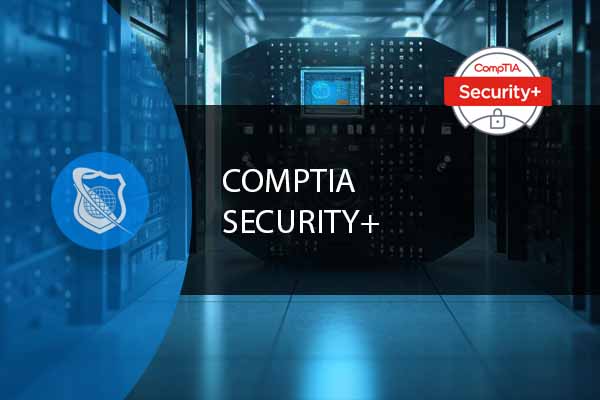IT security risks and threats have become a paramount concern for individuals, businesses, and governments alike. As technology advances, so do the methods and strategies of cybercriminals, making it imperative to understand the various facets of these threats. This introduction delves into the world of IT security, highlighting the top 10 cyber security threats, the myriad types of security threats and risks, and the ongoing battle against information security threats.
The concept of IT security threats encompasses a broad spectrum of risks, ranging from sophisticated cyberattacks to simple yet damaging security oversights. The term “security concerns” in the digital context refers to the potential vulnerabilities and exploits that can lead to data breaches, financial loss, and reputational damage. In this regard, what is threat in information security? Essentially, it is any potential or actualized action that can compromise the integrity, confidentiality, and availability of information.
As we explore the types of security threats, it becomes evident that they are not monolithic; they vary greatly in form and function. From malware infections and phishing scams, which are perennial entries in the list of top 10 cyber threats, to more insidious forms like ransomware and state-sponsored espionage, the landscape is diverse and complex. The top 10 security threats, in particular, represent a cross-section of the most pressing challenges in IT security today.
Moreover, IT security risks are not just about the malicious actors and their intentions but also about the systemic vulnerabilities within our digital systems. This includes software threats, which can arise from inherent weaknesses in the software we use every day, and web security threats, which exploit the interconnected nature of the internet. Understanding these risks is crucial for developing effective security strategies.
The evolution of these threats is also noteworthy. What constituted the top 10 cyber risks a few years ago might have evolved or been replaced by new, more sophisticated threats. This continuous evolution underscores the need for adaptive and proactive security measures. It’s not just about countering the threats of today but also anticipating the challenges of tomorrow.
In this comprehensive introduction, we will explore these aspects in detail, providing insights into the common information security threats, the types of information security threats, and the best practices to mitigate these risks. Our journey through the labyrinth of IT security threats will equip you with the knowledge to understand and combat these digital dangers effectively.
Information Security Analyst Career Path
An Information Security Analyst plays a pivotal role in safeguarding an organization’s digital infrastructure and sensitive data. This job involves a blend of technical expertise, vigilance, and continuous learning to protect against ever-evolving cyber threats.
Understanding IT Security Threats in the Digital Age
In today’s interconnected world, understanding IT security threats is crucial for safeguarding sensitive information. The landscape of information security threats is constantly evolving, with new types of security risks emerging regularly. From the top 10 cyber security threats to more niche concerns, each threat poses unique challenges to IT security.
Top 10 Cyber Threats
- Phishing Attacks: Phishing remains one of the most common cyber threats. Attackers use fraudulent emails or messages that mimic legitimate sources to trick victims into revealing sensitive information, such as login credentials or financial information.
- Ransomware: This type of malware encrypts a victim’s data and demands a ransom for its release. Ransomware attacks can target individuals, businesses, and even public infrastructure.
- Data Breaches: Unauthorized access to or disclosure of personal information, often involving sensitive data like social security numbers, credit card information, or healthcare records. Large-scale data breaches can affect millions of users.
- Malware: This encompasses various forms of malicious software, including viruses, worms, and trojans, designed to damage or disrupt systems, steal information, or gain unauthorized access to networks.
- Distributed Denial of Service (DDoS) Attacks: These attacks flood a website or network with excessive traffic to overwhelm and incapacitate it, often resulting in significant downtime.
- Advanced Persistent Threats (APTs): These are prolonged and targeted cyberattacks in which an intruder gains access to a network and remains undetected for an extended period, often with the intention of stealing data rather than causing damage.
- Insider Threats: Threats posed by individuals within an organization, such as employees or contractors, who may intentionally or unintentionally misuse their access to harm the organization’s networks, systems, or data.
- **Crypto jacking**: This involves the unauthorized use of someone else’s computer to mine cryptocurrency. Hackers install crypto mining software on the compromised systems, utilizing the victims’ processing power and electricity to mine cryptocurrency.
- Internet of Things (IoT) Vulnerabilities: With the proliferation of IoT devices, vulnerabilities in these devices have become a significant concern. These devices often lack robust security, making them easy targets for hackers to exploit and gain access to wider networks.
- AI-Powered Attacks: As artificial intelligence (AI) technology advances, cybercriminals are using AI to enhance their attack methods. This includes using AI for developing sophisticated malware, automating attacks, and performing social engineering at scale.
Information Security Manager Career Path
Propel your career forward and be part of an essential member of any management team as an Information Security Manager. This advanced training series is designed specifically for those want to move up into a management position in the IT field.
Minimize IT Security Risk and Threats
Defending against IT security threats involves a multifaceted approach that combines technology, processes, and education. Here are examples of strategies and best practices to counteract these threats :
- Use of Advanced Anti-Malware Software: Implementing robust anti-malware solutions that can detect and neutralize viruses, worms, trojans, and other types of malicious software is crucial.
- Regular Software Updates and Patch Management: Keeping all software, including operating systems and applications, up-to-date with the latest security patches helps close vulnerabilities that attackers could exploit.
- Employing Firewalls and Network Security Tools: Using firewalls to monitor and control incoming and outgoing network traffic based on predetermined security rules is essential. Network security solutions like intrusion detection systems (IDS) and intrusion prevention systems (IPS) can also help detect and block malicious activities.
- Data Encryption: Encrypting sensitive data both at rest and in transit ensures that even if data is intercepted or accessed without authorization, it remains unreadable and secure.
- Implementing Strong Authentication Processes: This includes using multi-factor authentication (MFA) which adds an extra layer of security beyond just usernames and passwords.
- Regular Security Audits and Assessments: Conducting periodic security audits and risk assessments helps identify and rectify vulnerabilities in the IT infrastructure.
- Creating a Security-Focused Organizational Culture: Training employees on security best practices, such as recognizing phishing emails and safe internet usage, is vital. Regular awareness sessions can keep everyone informed about the latest threats and the importance of security.
- Developing and Enforcing Security Policies: Clearly defined security policies and procedures guide employees on the do’s and don’ts regarding IT security. This includes policies on password management, data handling, and response protocols in case of a security breach.
- Backup and Disaster Recovery Planning: Regularly backing up data and having a comprehensive disaster recovery plan ensures business continuity in the event of a cyberattack, like ransomware.
- Endpoint Protection: Securing all endpoint devices such as computers, mobile phones, and tablets against threats is crucial, as these are often targets for initial breaches.
- Utilizing Secure Web Gateways and Email Security Solutions: These tools provide advanced threat defense, data loss prevention, and email encryption, significantly reducing the risk of web and email-based threats.
- Regularly Changing and Managing Passwords: Encouraging strong, unique passwords and changing them regularly can significantly reduce the risk of unauthorized access. Password management tools can help in securely managing and storing passwords.
- Segmenting Networks: Dividing the network into segments can limit the spread of infections or breaches and make it easier to isolate compromised areas without disrupting the entire network.
- Zero Trust Security Model: Implementing a zero-trust model, where trust is never assumed and verification is required from everyone trying to access resources in the network, regardless of whether they are inside or outside of the network perimeter.
- Secure Configuration of IT Systems and Services: Ensuring that all systems and services are configured securely to minimize vulnerabilities and exposure to attacks.
- Monitoring and Responding to Incidents: Continuous monitoring of IT systems and networks for suspicious activities, and having a well-defined incident response plan to quickly and effectively address any security incidents.
- Vendor and Third-Party Risk Management: Assessing and managing the security risks associated with third-party vendors and service providers, as they can be a source of security vulnerabilities.
- Cloud Security Measures: If using cloud services, ensure appropriate security measures are in place, such as secure access controls and encryption, to protect data stored in the cloud.
- Mobile Device Management (MDM): Implementing MDM solutions to manage and secure employees’ mobile devices that access corporate networks and data.
- Community and Industry Collaboration: Participating in cybersecurity forums and industry groups for sharing information about emerging threats and best practices can provide valuable insights for improving security.
Each of these examples plays a vital role in creating a comprehensive defense against the myriad of IT security threats faced by modern organizations. The key is not only to implement these strategies but also to regularly review and update them to adapt to the constantly changing cyber threat landscape.
Secure Your Networks and Prevent Password Breaches
Our robust CompTIA Sec+ course is the perfect resouce to ensure your company’s most valuable assets are safe. Up your security skills with this comprehensive course at an exceptional price.
Free CompTIA A+ Training
Ready to launch your IT career? Get a 7-day free trial of our top-rated CompTIA A+ training series. Dive into the world of technology with our Free CompTIA A+ Core Series, and take the first step towards success!
Conclusion : Fortifying Defenses in the Face of Evolving IT Security Threats
In the dynamic and ever-evolving world of IT security, vigilance and adaptability are paramount. As we have explored, defending against IT security threats requires a multifaceted and proactive approach. From implementing advanced anti-malware software and regular software updates to fostering a security-focused organizational culture, each strategy plays a critical role in building a resilient defense.
The use of strong authentication processes, such as multi-factor authentication, alongside regular security audits, forms the backbone of an effective security posture. Encryption of sensitive data, both at rest and in transit, ensures that confidential information remains secure even in the event of a breach. Moreover, developing and enforcing comprehensive security policies guides the organization in maintaining best practices and responding effectively to incidents.
Backup and disaster recovery planning are not just precautionary measures; they are essential components of business continuity in the face of cyberattacks. Equally important is the secure configuration of IT systems and services, coupled with continuous monitoring for suspicious activities. The implementation of a zero-trust security model reflects a modern approach to cybersecurity, where verification is central to network access.
Incorporating endpoint protection and segmenting networks further enhances the ability to control and mitigate risks. Addressing the security aspects of cloud services and mobile devices extends this protection beyond the traditional office environment. Furthermore, the management of third-party risks is crucial, as vendors and external partners can often be the weakest link in the security chain.
Collaboration within the cybersecurity community and staying informed about emerging threats are key to staying ahead in this constant battle. By sharing knowledge and experiences, organizations can collectively improve their defense mechanisms.
The landscape of IT security threats is complex and challenging, but with a comprehensive and evolving strategy, organizations can significantly reduce their risk and safeguard their digital assets. Emphasizing education, preparedness, and continuous improvement in cybersecurity practices will ensure that businesses remain resilient in the face of these ever-changing threats.
Frequently Asked Questions: Navigating IT Security Threats and Solutions
What Are the Most Common IT Security Threats Today?
The most common IT security threats include phishing attacks, ransomware, data breaches, malware, and distributed denial of service (DDoS) attacks. These threats continually evolve, making it crucial for individuals and organizations to stay informed and prepared.
How Can Businesses Protect Against the Top 10 Cyber Security Threats?
Businesses can protect against the top 10 cyber security threats by implementing a robust security strategy. This includes using advanced anti-malware software, conducting regular security audits, employing strong authentication methods like multi-factor authentication, educating employees about security best practices, and having an effective incident response plan.
What Is the Role of Encryption in Information Security Threats?
Encryption plays a vital role in mitigating information security threats by ensuring that data, whether at rest or in transit, remains secure and unreadable to unauthorized users. It is a critical defense mechanism against data breaches and interception of sensitive information.
Can Regular Software Updates Reduce IT Security Risks?
Yes, regular software updates are essential in reducing IT security risks. These updates often include patches for known vulnerabilities that could be exploited by cybercriminals. Keeping software up-to-date is a simple yet effective way to strengthen your cybersecurity defenses.
What Are the Best Practices for Mitigating Web Security Threats?
Best practices for mitigating web security threats include using secure and updated web browsers, installing web security gateways or firewalls, being cautious about downloading files or clicking on links from unknown sources, and regularly updating web applications and servers with the latest security patches.















